Any ribeye steak aficionado will tell you that the best ribeye steak is the one cooked on a charcoal grill. Up until today I would agree with that statement wholeheartedly, but now I keep an open mind about it. Inspired by great taste and flavor of the pan-seared filet mignon, I followed the same method to prepare a ribeye steak in a cast iron pan. My verdict - it was nothing short of spectacular. The blue cheese compound butter makes this steak irresistible. Was it better than the charcoal grilled one? No. Worse? A resounding no. It was different and awesome in its own right. You sure can't go wrong either way.
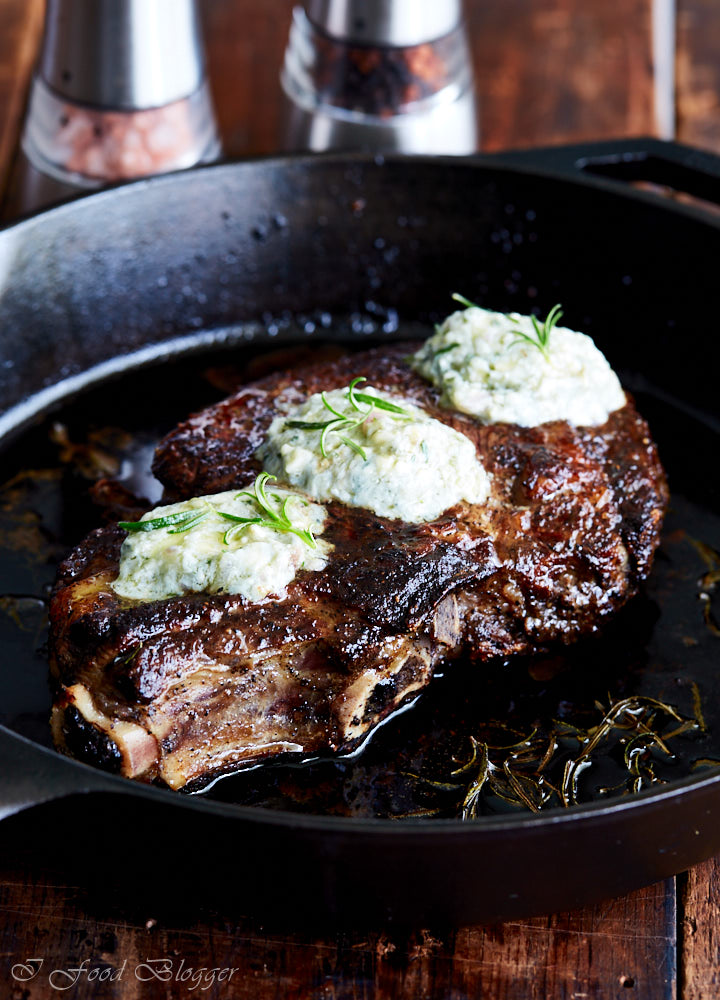
Ribeye steak is known under many names: beauty steak, market steak, Delmonico steak, Spencer steak, scotch filet, or entrecôte. The reason for these various names is that the steaks they identify come from the same longissimus dorsi muscle, but differ in how they are butchered or simply because of geographic location. Boned, the steak becomes a rib eye, also known as Spencer steak (largely in the West). A Delmonico cut ribeye steak consists of two heart cuts of ribeye tied together with butcher's twine. It resembles a filet mignon in appearance, but because of the more marbled nature of a ribeye, is moister. The Delmonico name originated in New York, taking after the name of Delmonico Steakhouse that allegedly invented it. A scotch filet is simply a ribeye steak with bone removed, while entrecôte is the generic French name for any type of steak that comes from longissimus dorsi muscle.
For best results, start with a 2-inch thick steak or even thicker. A thick piece of meat will allow for proper caramelization on the outside while giving you enough latitude to have the interior cooked anywhere from rare to well-done. A thinly cut ribeye steak will cook inside too fast.
I like buying bone-in rib roasts which I then cut into individual ribeye steaks. If you cut right between the bones, you will end up with perfectly sized 2-inch thick steaks. This is the best solution as rib roasts on average cost less than pre-cut steaks. And you will end up with nice, thick steaks. Pre-cut ribeye steak that you will find at supermarkets is usually quite a bit thinner than 2 inches.
Here is a 6 lb rib roast from Costco that I cut up into 3 steaks. Each ribeye steak is about 2 pounds, big enough to feed 2-3 hungry people. No kidding! These are serious steaks.
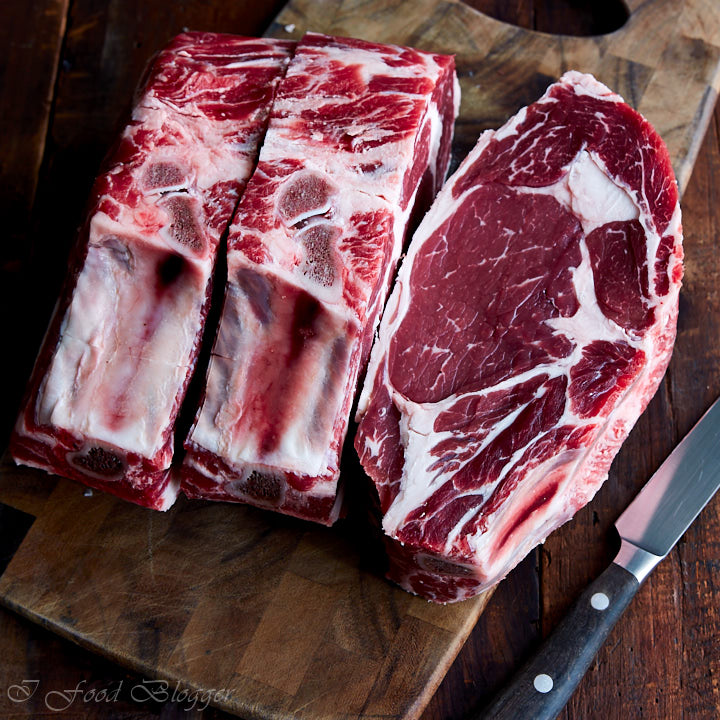
For best results, let the steak rest for at least 45 minutes at room temperature prior to cooking. It's also recommended seasoning the steak with salt an pepper and let it sit in the fridge for a minimum of two hours and up to 3 days, loosely covered. During this time the salt on the surface of the meat will draw the moisture from the meat, then will get dissolved in the water which will then get re-absorbed back into the meat.

Ribeye steak comes from a very fatty cut. This fattiness lends the steak juiciness and a great deal of flavor. For even more flavor, try compound butter made with fresh rosemary, shallots and blue cheese. This is a winning combination even if you are not too fond of blue cheese. Try it, you will be surprised.
Place a few disks or small dollops on a hot steak so that they can slowly melt, mixing with steak juices and turning into a luxurious sauce.
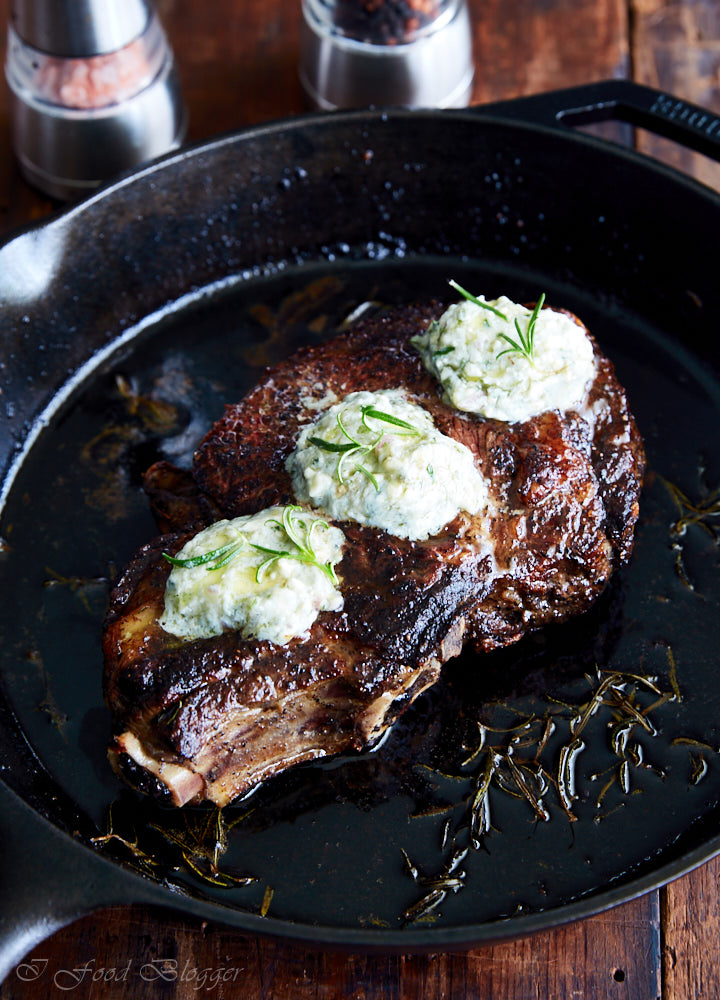
Cooking a large, thick ribeye steak is not a matter of minutes. Be ready to sear for two minutes on each side on a cast iron pan, then bake in the oven for about 20 - 30 minutes.
Below is the table of temps that are commonly used to judge steak doneness based on how you like it to be.
| Steak Doneness | Remove from Oven at this Temp | Final Cooked Temp |
|---|---|---|
| Rare | 120°F | 125°F |
| Medium Rare | 130°F | 135°F |
| Medium | 140°F | 145°F |
| Medium Well | 150°F | 155°F |
| Well Done | 160°F | 165°F |
Sources: AmazingRibs.com, CertifiedAngusBeef.com.
To ensure even cooking, flip the steak right before putting it into the oven, and then again halfway during oven baking. This will also help the steak cook faster. Oven and pan heat is unidirectional, resulting in bottom side cooking faster then the top one. Flipping helps even things out.
Here is the end result, cooked to medium at the request from my folks.
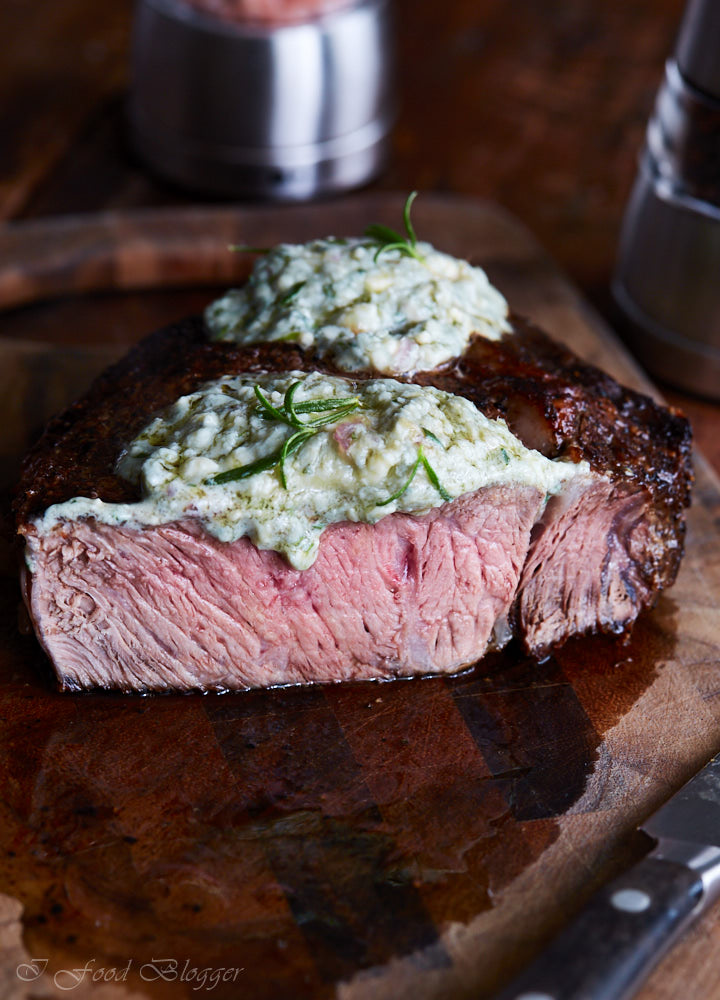
As usual, to ensure perfect doneness, I use my trusty ThermoWorks BBQ thermometer with dual probes. If you are looking for one to use in the kitchen only, a ThermoPro TP08 dual pro BBQ thermometer is a great choice. Just insert the probe, set the target temperature and let the alarm alert you when your steaks are ready. For both kitchen and open fire grill use, go for the ThermoWorks with high temp probes. Those things are fantastic.

After resting, carve the steak and serve immediately. Better yet, with a steak this large, serve it whole, allowing guests to cut hunks off for themselves.

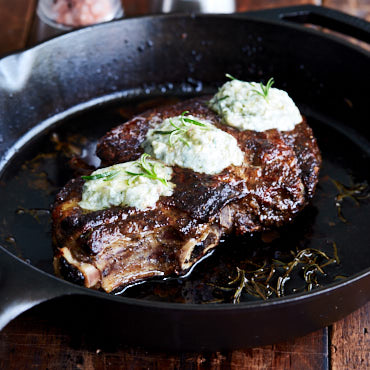
Pan-Seared Ribeye Steak with Blue Cheese Compound Butter
Print Pin RateIngredients
- 1 2- inch thick ribeye steak about 2 lbs
- 2 Tbsp good quality olive oil
- 2 Tbsp unsalted butter
- 1 rosemary twig for garnish
- 2 rosemary twigs to flavor the cooking butter
- Sea or kosher salt and coarsely ground black pepper to taste
- For the compound butter:
- 1/2 stick of unsalted butter
- 1 Tbsp fresh rosemary finely chopped
- 1 shallot minced
- 2 oz blue cheese Gorgonzola, Roquefort, or Stilton
- 1 tsp Worcestershire sauce
Instructions
- Preheat oven to 410F.
- Remove the ribeye steak from the fridge 45 minutes before cooking and let it come up to room temperature.
- To make the compound butter, take the butter out of the fridge and let it sit at room temperature while preparing shallots and rosemary. In the meantime, rinse rosemary, chop and set aside. Peel and mince the shallot. If the butter is too hard, microwave for 10 seconds or pound by a pasta roller. Add the crumbled blue cheese, chopped rosemary, minced shallot, Worcestershire sauce and mix in until evenly distributed. Shape into a log and refrigerate until ready to use. Remove the butter from the fridge 10 minutes prior to using.
- When ready to cook, liberally season the steak with salt and pepper all over and set aside.
- Heat the olive oil and the butter in a large (12") cast iron pan over medium-high heat. When the butter just starts smoking and turns dark brown in color, place the steak in the pan and sear undisturbed for 2 minutes. Flip and sear for another 2 minutes. As we are dealing with a thick and a large piece of meat, I recommend searing sides as well. Turn the steak on its side and sear for about 1-2 minutes. Repeat with the other side. You can can also sear the top and bottom sides by supporting the steak with a pair of tongs. Once done searing, add rosemary into the pan and transfer into the preheated oven.
- Bake to desired doneness: rare - 120F-125F, medium rare - 130F-135F, medium - 140F-145F, medium well - 150F-155F and well done - 160F-165F.
- Remove the the steak from the skillet and place on a platter. Top with 3 slices of compound butter. Cover with foil ensuring it doesn't touch the butter, and let it rest for 3-5 minutes. The garnish with fresh rosemary and serve immediately.


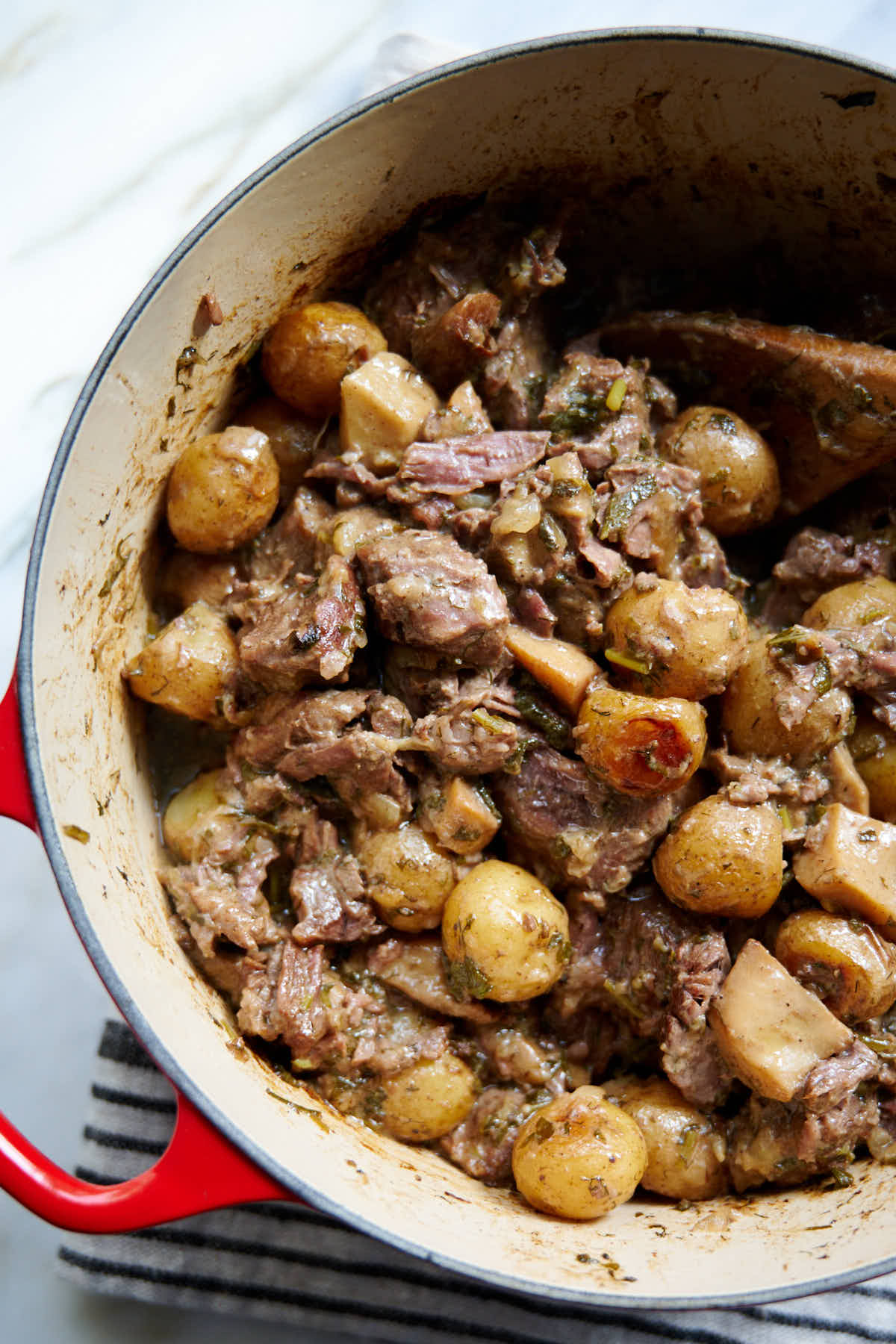
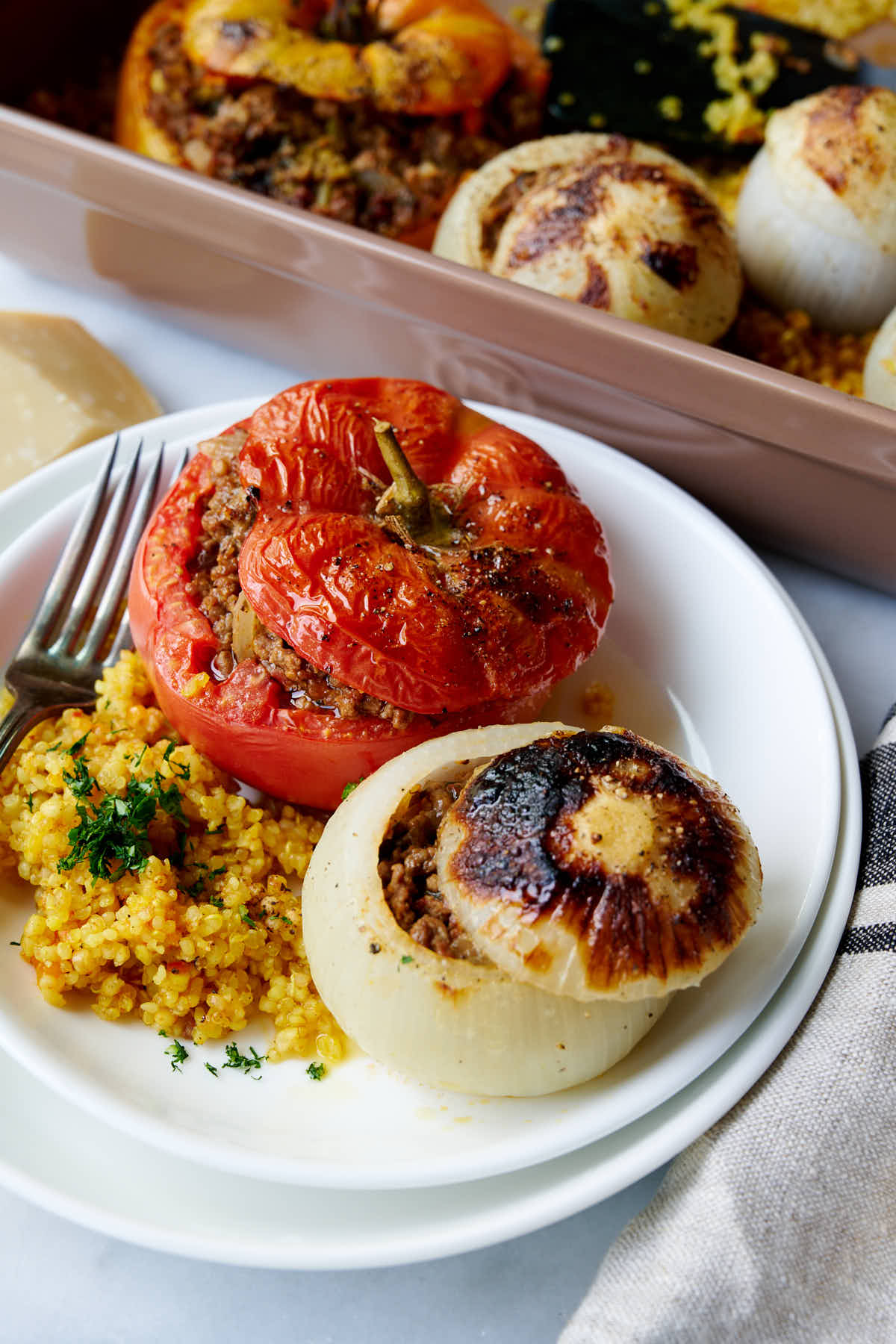
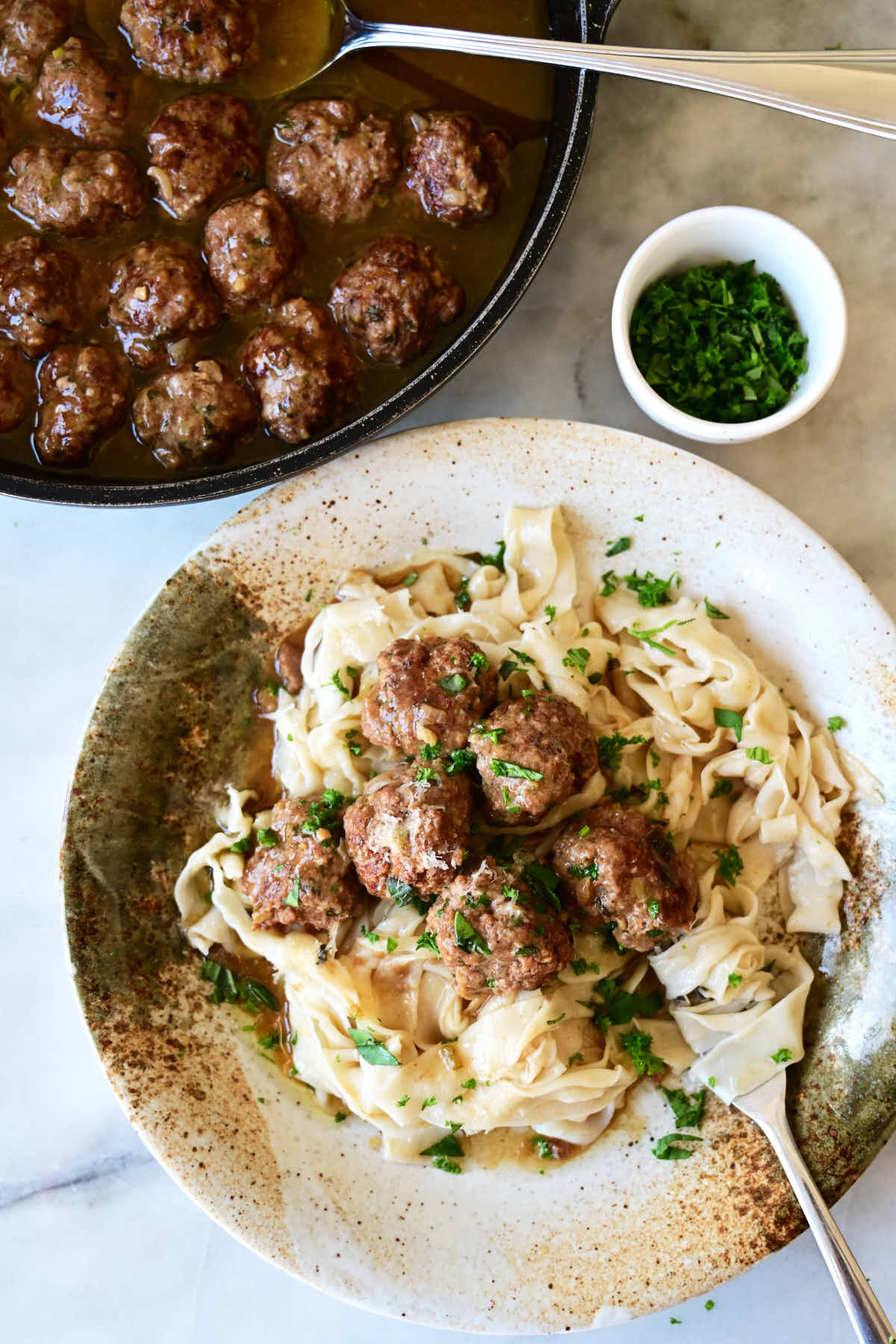

sue | theviewfromgreatisland says
This steak looks like a dream, and I'm going to look up that thermometer, I need one!
victor says
Thanks!